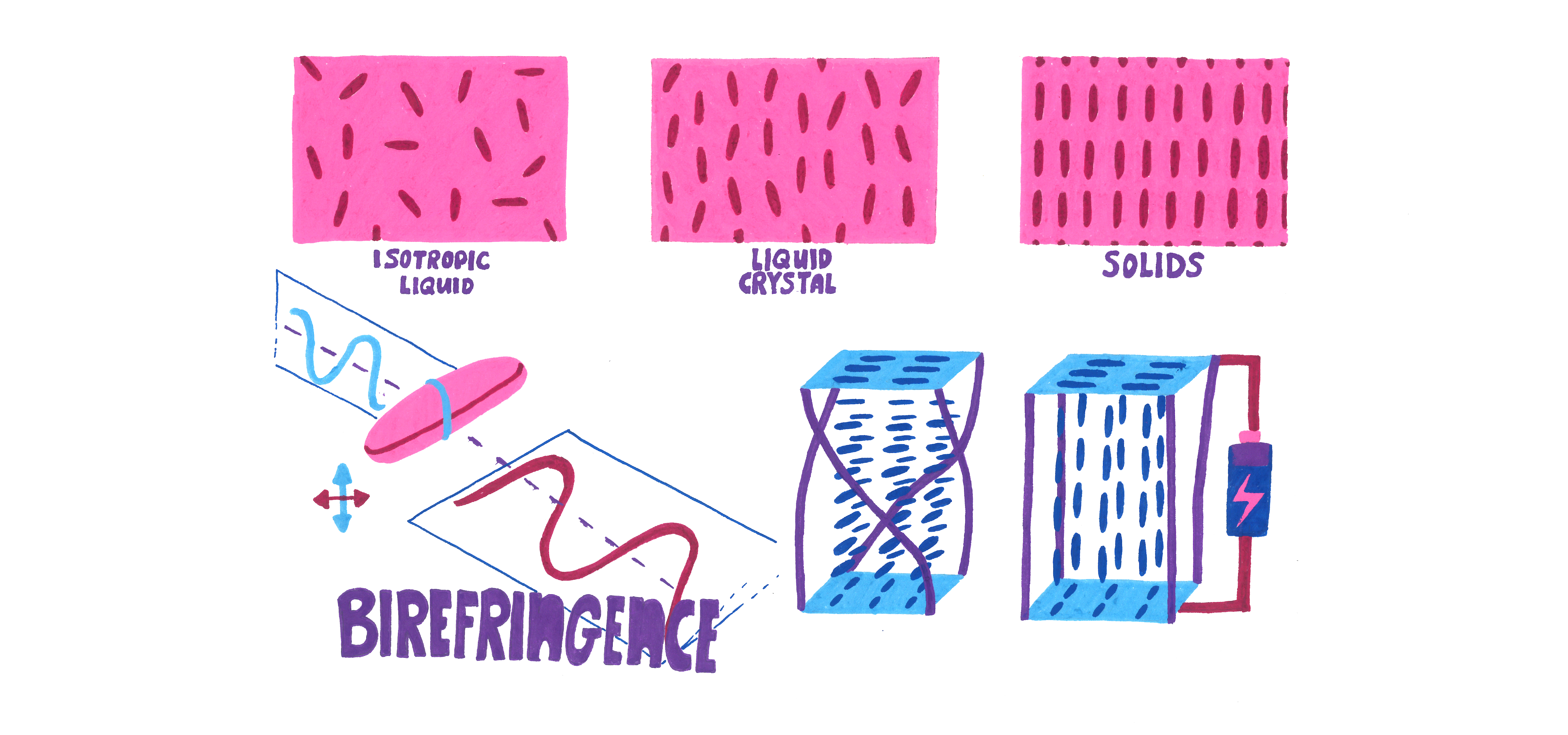Posts from June 2021
Do you know liquid crystals? Well, you look at them right now!
Liquid crystals in your television, as well as in my optical instruments
The first time I heard the term: 'liquid crystal', I thought of a kind of pan
on a very high heat in which crystals were melted. A liquid is a liquid, right? Well,
technically not entirely. Molecules in liquid crystals are capable of flowing, but at
the same time they are also ordered and oriented with respect to each other. This means
that if we look at the crystal face forwards, it has different properties than if we look
at it from the sides. We can modify the ordered direction of the molecules by passing an
electric current through the crystal or by exposing it to light or heat. This enables us
to change the optical properties of the crystal. One important property, for example, is
the refractive index1, which depends on the polarisation properties of the crystal.
 Birefringence • Some materials influence light by an optical property that we call birefringence.
Birefringence, also referred to as double refraction, is a property in which the
refractive index of a transparent material depends on its polarisation direction.
A non-polarised light beam incident on the material is split into two polarised
light beams that have their polarization directions perpendicular to each other. For
instance, horizontal and vertical. Christiaan Huygens, a famous Dutch astronomer from
the 17th century, described this phenomenon while exploring the double refraction of
light in a crystal called calcite.
Birefringence • Some materials influence light by an optical property that we call birefringence.
Birefringence, also referred to as double refraction, is a property in which the
refractive index of a transparent material depends on its polarisation direction.
A non-polarised light beam incident on the material is split into two polarised
light beams that have their polarization directions perpendicular to each other. For
instance, horizontal and vertical. Christiaan Huygens, a famous Dutch astronomer from
the 17th century, described this phenomenon while exploring the double refraction of
light in a crystal called calcite.
Why am I telling you about liquid crystals and this birefringent property? Well, a
nice fact is that you look at these liquid crystals (almost) every day! The abbreviation
LCD stands for liquid crystal display. The crystals in the pixels of the screen make
sure that we can easily switch the pixels off and on with a tiny electrical current.
In addition, I work with liquid crystals as part of my research. Not only do I spend a
lot of time behind a computer screen, but they are also incorporated into components of
the instruments that I use to do my research: Treepol and LSDpol. In their liquid crystal
components, we can use birefringence to change incoming polarisation signals. For example,
we can transform linear polarised light to elliptical polarised light. Soon I will tell
more about how we can also use these crystals without using electricity. This is essential
for optical instruments that we want to send into space.
1 The refractive index of a material indicates how much light is deflected
when it travels through the interface of two different materials. The index of refraction
depends on the wavelength (also called 'colour') of the incoming light. This wavelength
dependency helps us to understand why we can use a prism to split white sunlight into different colours.
